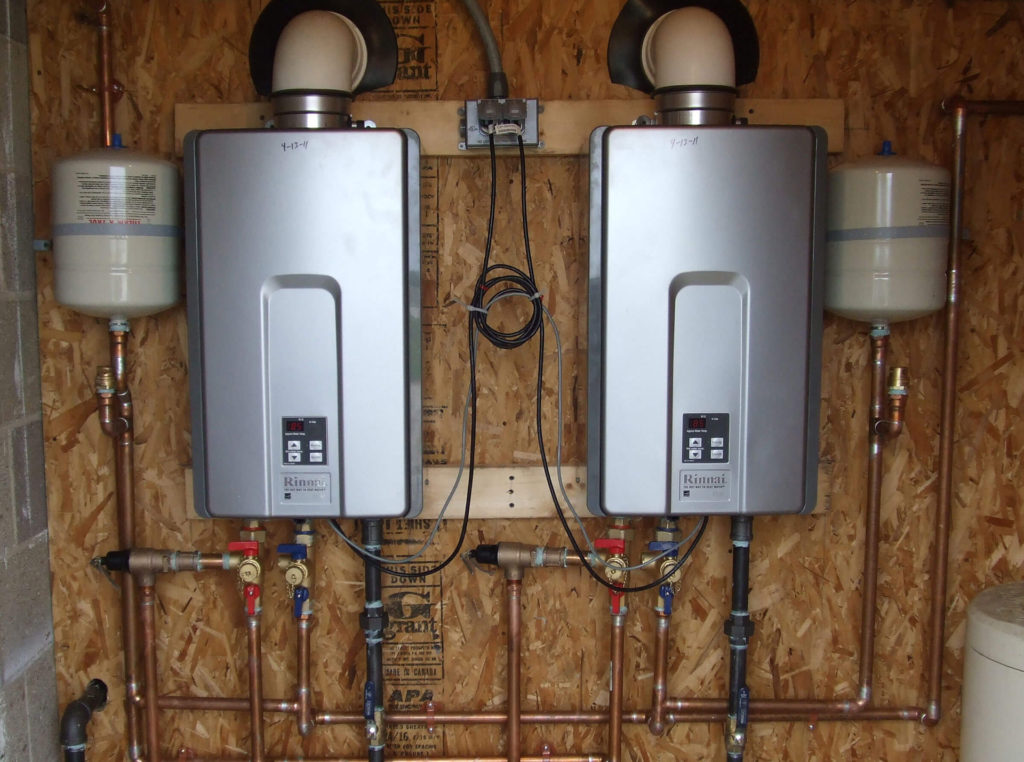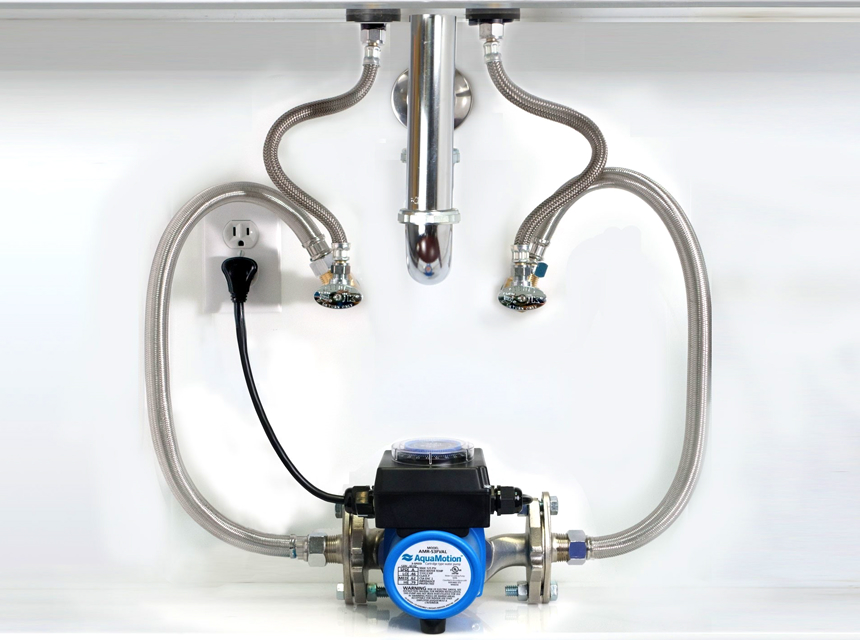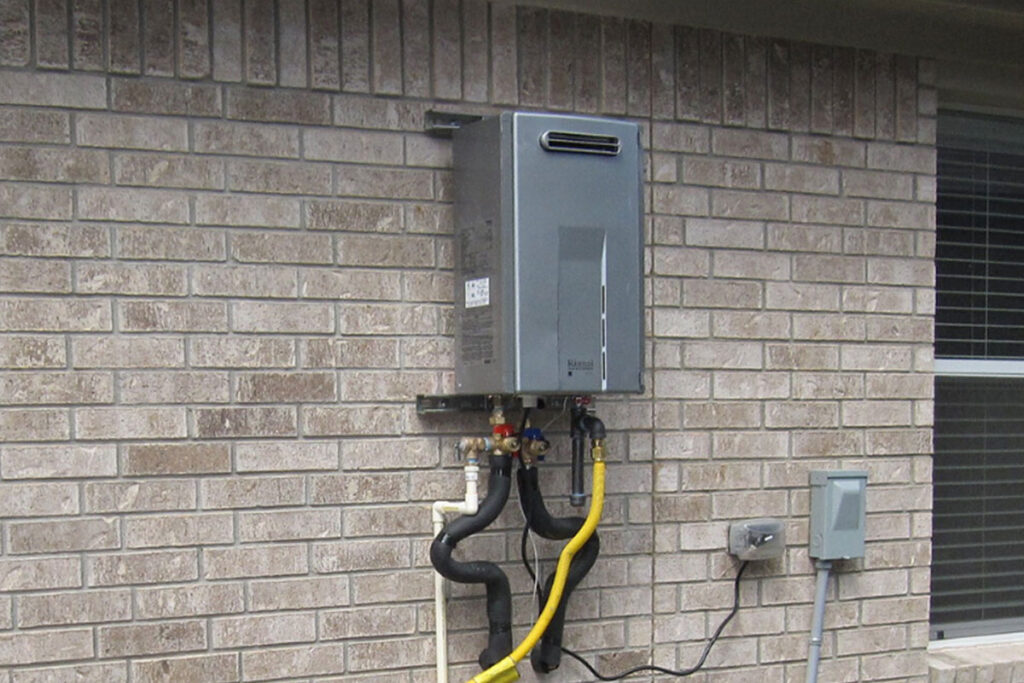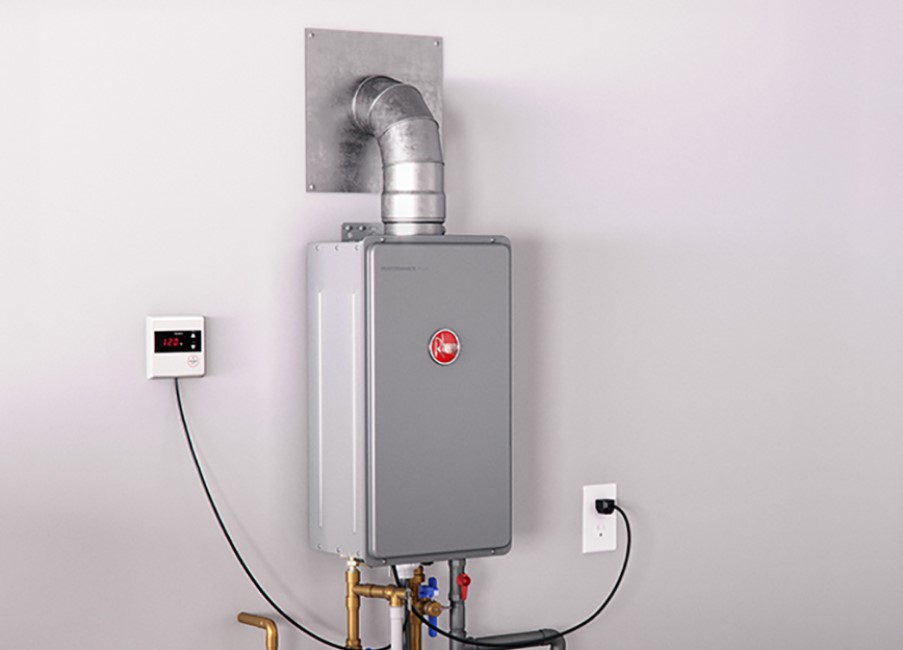

Though older homes will likely have a large hot water tank in a basement or maintenance room, many homeowners are choosing tankless water heaters for their hot water needs. Though these two pieces of home equipment have a similar purpose, they have numerous differences worth noting. This may have you wondering which of these options is better in the tankless water heater vs tank water heater debate.
Well, the short answer is that neither of these models is better than the other, though some may be a more suitable choice for specific homes, based on the budget of the homeowners, their hot water usage, and the amount of space they have available. If you’ve never taken the time to look at what tankless water heaters and traditional water tanks have to offer, you may want to do so before choosing one for your home.
When comparing tankless vs tank water heaters, the first thing to look at is what each of these models is and how they work. Tank water heaters are the more common models since they have been around longer and were the standard option in homes for decades. They are large tanks, ranging from 30 to 50 gallons, depending on the size of the home.
Tank water heaters come in two types. There are electric water heaters, which include an electric element on the top and bottom of the tank to heat the water. The Rheem MR50245 50-gallon Marathin Tall Electric Water Heater is one option to consider. There are also gas-powered tank heaters that have burners at the bottom of the unit, which heat the water faster than the electric models. Both the electric and gas tank water heaters are quite large, which is why they are usually stored in a basement.
Tankless water heaters are much smaller since they don’t actually store the water inside the unit. Instead, they include a heat exchanger that heats the cold water as it passed through the equipment. This makes them a much more compact choice since they only take up a few feet of space, plus they can be wall-mounted to keep them out of the way.
You can choose an electric tankless water heater if this is what’s used to power your home or you can try a gas-powered model, like the Rinnai RUC97in Ultra Series Natural Gas Tankless Water Heater. There are even propane models available for those who need them.
Efficiency is one of the first things to look at when comparing both gas and electric tankless water heaters and tank models. Tank models run constantly to keep the water hot and ready for when you need it. Even if you aren’t home, they are still running, and the larger the tank you have, the more energy it will require to keep that water nice and hot. Many models, especially the older ones, also have an issue with heat loss, so an insulation blanket may be needed to solve the issue and help maximize the unit’s efficiency.
Tankless water heaters only turn on when you need hot water, so they are seen as the more energy-efficient option. Even though these models use up to 160 amps when they are on, which is higher than a water tank, the fact that they only turn on when you turn on your hot water faucet means that over time, you’re still using less energy with one of these models than with the large tank heaters.
Another thing to look into when trying to decide between a tankless hot water heater and a tank heater is the cost of the unit, as well as any installation fees. The traditional hot water tanks can cost about $500 to $700 for the unit, plus a couple hundred for professional installation costs.
Tankless water heaters are pricier, with many units costing $1000 or more on their own. The installation can double this cost, depending on whether or not any pipes need to be upgraded or gas lines installed. In the tankless water heater vs tank cost debate, the tank models are the more budget-friendly option.
As we discussed above, the tankless models seem to be more energy-efficient than the tank models since they don’t need to run constantly to heat the water. This also lowers your operating costs since it uses less electricity or gas to run the unit. This is especially true if the tank water heater you have has a higher water level than your usage since you’ll essentially be heating water you never use.
It also depends on whether you’re using an electric or gas model for either of these water heater options. Electricity is more expensive than natural gas, so sticking with the latter option can save you more money over time. You should also make sure you’re using an energy-efficient model in both the tank and tankless units to reduce your operating costs even more.
When choosing between tankless water heaters vs conventional models, the installation process is something to consider. Most older homes, and many new ones, have had tank water heaters, so replacing one is relatively easy since all the connections are already there.
Many homeowners can replace these units themselves, though it is recommended to have a professional do the installation if possible in case of any issues or if you’re switching from electric to gas. You do need to remember that you need a lot of space for a tank water heater, so if this is a new piece for your home, measure the space carefully before choosing one.
Installing a tankless water heater is a trickier process since the gas models often need larger vents and fittings than the tank models, so changing the pipes may be part of the job. Electric models also use more electricity than the tanks, so an upgrade to your electrical circuit will also be needed.
Though you technically don’t have to do anything once these units are set up and running, they don’t offer the same usage in terms of how much hot water they can put out at a time. The tank water heaters heat all the water they contain, so you can run a few different applications at once, allowing you to shower and run your dishwasher without one cooling down, at least until the water tank runs out and needs to refill and heat the new water.
Tankless water heaters heat the water as needed but could be dealing with output flow issues when you try to use hot water for more than one application at a time. If it can’t keep up with the output, you may not be getting hot water for both your dishwasher and shower, with one running a bit cooler than the other. Adding an extra tankless water heater or two can reduce this issue in homes that need higher hot water levels, though this does double the unit cost, as well as increase the operating costs.
Hot water tanks constantly have water running through them to replace what you’ve used in your home. This water contains sediment that slowly accumulates at the bottom of the tank over time. This reduces efficiency and will eventually require maintenance to remove that buildup, which means flushing your tank every 3 months or so to keep it running well. You will also need to check the pressure and temperature valves twice a year to keep the tank working properly.
Tankless water heaters don’t need nearly the maintenance that the tank models require since they aren’t used to store the water, which reduces the sediment buildup. It will still need to be flushed every 6 to 12 months, depending on the quality of your water. This process is relatively easy with no special tools required.
As long as you maintain your tank water heater, it can last about 10 to 15 years. This also depends on your usage levels, as well as the manufacturer of the unit you’ve chosen.
A tankless water heater usually has a longer lifespan of about 20 years. If there are any issues with parts, they are also easier to fix to keep these units running for as long as possible.
| Pros | Cons | |
| Tankless models |
|
|
| Tank models |
|
|
Though there is no right option when comparing a tankless water heater vs a tank model, many people prefer one over the other. The tankless models use less energy over the long run, have a long lifespan, and require less maintenance to keep them running. They are also much smaller than the larger tank models, though they are more expensive for the unit and the installation.
Large tank water heaters take up more space but also provide you with a higher hot water output, plus they cost less to buy and install, so many homeowners choose this option for their homes. Be sure to check out all the features each of these models has to offer to be sure you’re getting the right one for your home.





